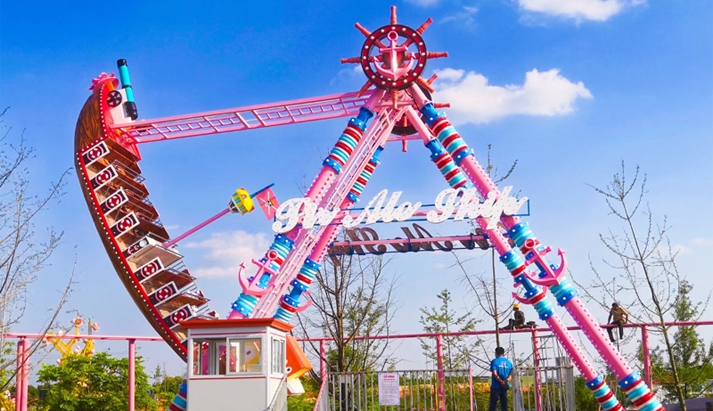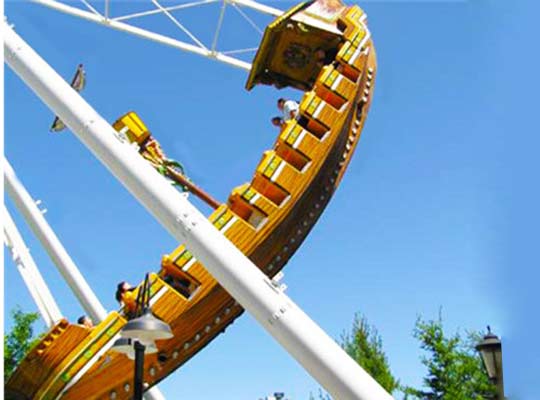Pirate ship rides are a staple of amusement parks and carnivals around the world. These exciting attractions give riders the sensation of sailing on a pirate ship, complete with swaying movements and stomach-dropping drops. In this article, we will explore the history of pirate ship rides, the technology behind them, and why they continue to be popular with thrill-seekers of all ages.
History of Pirate Ship Rides
The origins of pirate ship rides can be traced back to the early 1900s, when amusement parks began to grow in popularity. One of the earliest known examples of a pirate ship ride was the “Swan and Billow” ride, which was introduced at Luna Park in Coney Island in 1904. This ride featured a ship-shaped structure that moved back and forth on a track, simulating the motion of a ship on the high seas.
Over the years, pirate ship rides became more sophisticated and thrilling. In the 1960s, the first swinging pirate ship ride was introduced by the German company Huss Rides. This ride, known as the “Pirate Ship,” featured a hydraulic system that swung the ship-shaped structure back and forth in a pendulum-like motion.

Since then, pirate ship rides have continued to evolve and become more elaborate. Today, there are dozens of different models and designs of pirate ship amusement rides for sale, each with their own unique features and capabilities.
Technology Behind Pirate Ship Rides
Pirate ship rides use a combination of hydraulic, mechanical, and electrical systems to create the thrilling experience of sailing on a pirate ship. The ride typically consists of a ship-shaped structure that is mounted on a giant pivot point, allowing it to swing back and forth in a pendulum-like motion.
The ship is usually powered by a hydraulic system, which consists of a pump, fluid reservoir, and a series of hydraulic cylinders. The pump sends hydraulic fluid to the cylinders, which push or pull the ship’s structure back and forth. By controlling the flow of fluid to the cylinders, operators can adjust the speed and angle of the swing, creating a range of different ride experiences.
In addition to the hydraulic system, pirate ship rides also feature a number of safety mechanisms to ensure the ride is secure for passengers. These may include lap belts or other restraints, as well as sensors and alarms that monitor the ride’s movements and alert operators if anything is amiss.
Why Are Pirate Ship Rides So Popular?
Pirate ship rides continue to be popular with amusement park-goers and thrill-seekers of all ages for a number of reasons. For one, they offer a unique and exciting experience that is difficult to replicate in any other setting. The sensation of sailing on a pirate ship, complete with swaying movements and stomach-dropping drops, is both thrilling and exhilarating.
Additionally, pirate ship rides are relatively accessible to a wide range of riders. Unlike some extreme thrill rides that require a certain level of physical fitness or courage, pirate ship rides can be enjoyed by just about anyone who meets the height and weight requirements.
Furthermore, pirate ship rides are often located in highly visible and prominent locations within amusement parks, making them a popular attraction for both casual visitors and serious thrill-seekers. They are often featured on park maps and promotional materials, and may even be visible from outside the park, drawing in curious visitors from afar.
Conclusion
Pirate ship rides have been a staple of amusement parks and carnivals for over a century, and continue to be a popular amusement park rides for sale with riders of all ages. These thrilling rides use a combination of hydraulic, mechanical, and electrical systems to create the sensation of sailing on a pirate ship, complete with swaying movements and stomach-dropping drops.
Whether you’re a first-time rider or a seasoned thrill-seeker, pirate ship rides offer a unique and exciting

0